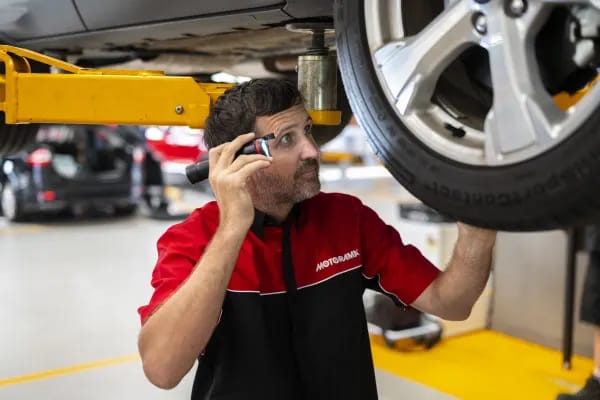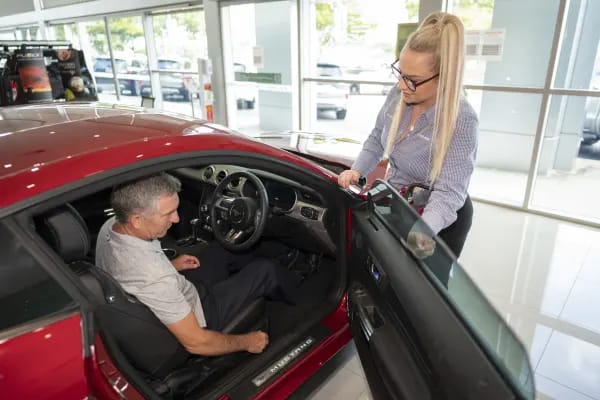
Review: 2016 Ford Ranger Wildtrak
Posted in Vehicle Reviews
Review: 2016 Ford Ranger Wildtrak
The Ford Ranger has been inching its way up the sales charts over the past 10 years or so as a solid offering to challenge traditional light commercial vehicles.
So what makes the Ranger so good? We took the top-of-the-line Wildtrak to find out.
Utes are big business for carmakers these days. Families are using them as the daily driver and therefore demanding more comfort, safety and convenience from a car that was once the most basic form of transport. Thanks to this, there is now a demand for ‘luxury’ utes – top-of-the-line models that have all the bling that any equivalent passenger car has, but with the toughness of a ute.
This is where the Ford Ranger Wildtrak fits in. Sitting amongst a small group of dual cab utes, all fitted with leather trim, high end infotainment systems and a swag of driver safety features that make for a sweet ride for mums and dads who use them to do the school run, and then back to the work site, mine or office where you can commonly spot these kinds of vehicles.

INITIAL IMPRESSION
Walking up to the Ranger Wildtrak, it’s as imposing as the rest of the 4x4 models in the Ranger line-up – with tweaks to the body to make it even more aggressive than even the XLT models.
The MkII Ranger line-up also features an updated look, including an imposing grille and panel changes – and the cosmetic changes have largely worked. If you already liked the styling of the last Ranger, you’ll be convinced that the Ford design team are on the right track with the new one.
Inside it’s a new look too, with premium materials everywhere. The Wildtrak gets a leather trimmed dash and steering wheel, contrast stitching as well as Ford’s SYNC2 System handling the media and navigation. Our test vehicle was fitted with the optional Technology Pack, which includes adaptive cruise control with forward collision alert, electronic lane keeping aid and lane departure warning.
All together, the MkII Ranger is well sorted inside and out when it’s parked, but how does it perform on the road?
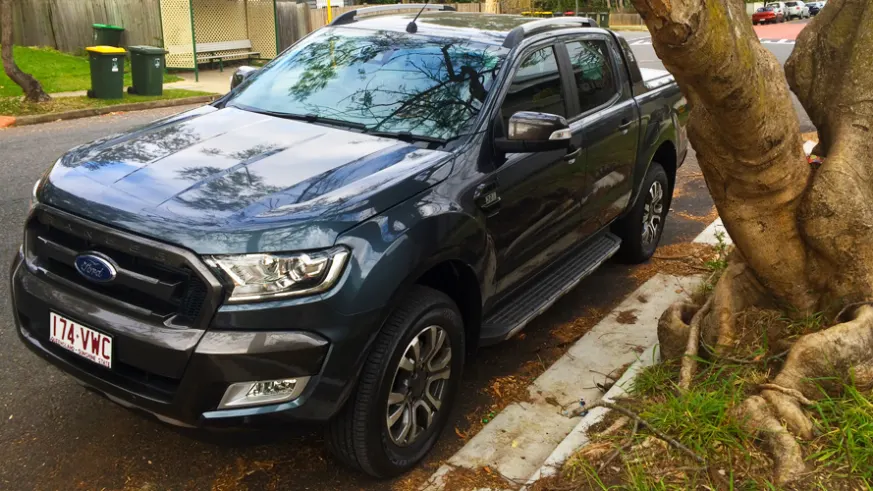
DRIVEABILITY
One big feature being pushed on the new ranger is the overhauled steering, which goes completely electric, instead of the hydraulic system in the last Ranger. It definitely enhances the feel of the Ranger on the road, giving good feedback and responding well to input. This translates to a more engaging drive than even the last model, which wasn’t a slouch on the road.
The 3.2L Diesel carries over from the MkI, but has received a few upgrades to increase fuel economy and power delivery. Largely though, the Ranger was pretty well sorted – and in the new Wildtrak, the diesel delivers its power well, pushing off from a standstill at a nice pace, and showing no hesitation at speed. To use a cliché, but it is almost car-like in the way that it sets out on a drive, there’s no sense that you’re driving a commercial vehicle that tips the scales at over 2.2 tonnes – for all it’s exterior toughness, the ride is extremely well sorted.
That’s not to say that it can’t handle itself off the beaten track. The low-range selector will put you into 4H or 4L with minimal fuss, and the 6-speed gearbox (either manual or automatic, as tested) can find what gear you need to tackle what you throw at it.
Around town, that electrically assisted steering (EPAS) makes life much easier. And it’s not as if the last Ranger had boat-like handling, it’s just now the MkII Ranger is even more responsive. Throttle response is improved as well, meaning you can seize gaps in the traffic or set off from a standstill without turbo lag or fuss from the engine.
All in all, then, the new Ranger is an improvement over the last model – but by how much comes down to what you look for in your daily driver.
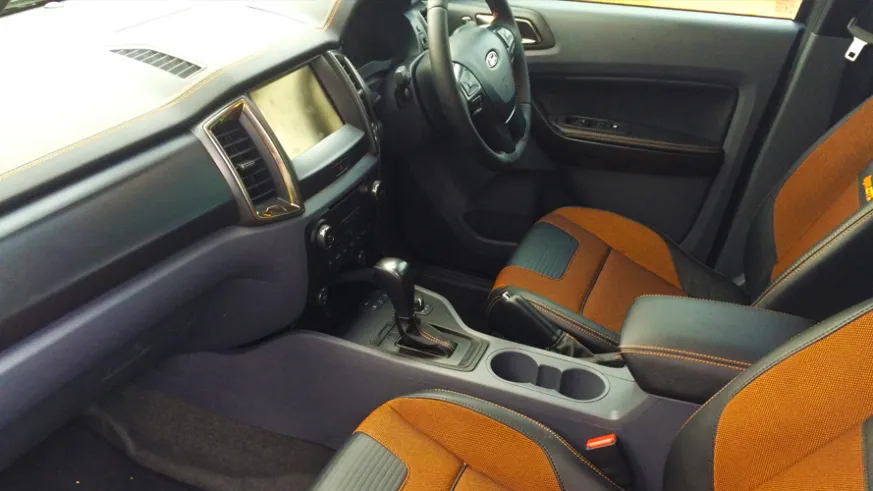
LIVEABILITY
We are living in the golden age for utes that are more than work vehicles. In that vein, the Ranger Wildtrak is generally seen as one of the top-shelf vehicles for people who need something as capable of hauling a load, as it is to pile into with the whole crew to travel to the beach.
This means that the MkII needs to improve on the formula that was already well done in the last Ranger. And it largely succeeds on this front.
SYNC2 will be the most noticeable change, superficially, and is standard for the Wildtrak and XLT models in the Ranger line-up. In terms of connectivity and eas-of-use, SYNC2 is leaps and bounds ahead of similar systems on the market. Voice recognition, in particular, is a standout in the software – simplifying commands and learning from driver input, so you don’t have to memorise a booklet of its phrases. It is a little disappointing that models below the XLT have to make do with the original SYNC software, but the SYNC suite is generally a pretty intuitive system.

The multi-information display on the Ranger is a welcome addition as well. Rather than look over at the screen in the centre console, the XLT and Wildtrak Ranger’s can now bring up a screen to the left of the speedo that can be changed between sound and navigation, usually reserved for the ‘main’ in-dash 8” colour screen, which means you can check on your route, or see who’s calling you or what song is playing without adjusting your line of sight.
The smart technology continues on the right side of the speedometer on the multi-information display, which houses the Ranger’s monitoring systems. You can choose a digital speedometer, fuel consumption monitor as well as set and keep an eye on the adaptive cruise control distance, or set the sensitivity of your forward collision alert.
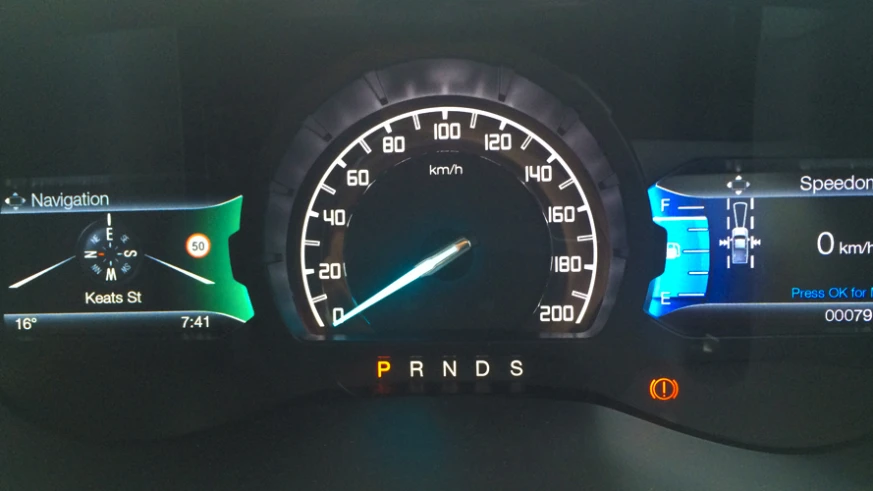
Reversing camera, however, is only available on the Wildtrak as standard – and only available on the XLT as a cost-option. It’s not as if the Ranger has poor visibility, but a reversing camera would help take away any doubts for anxious drivers in a tight space.
As you would expect from a vehicle like the Ranger Wildtrak, 5-Star ANCAP safety rating is standard – seven airbags, stability and traction controls and electronic braking.
The improvements that shine on the new Ranger are little changes to help prevent dangerous situations on the road. All 4x4 Rangers come with e-locking rear differentials, which improves your traction off-road, without you having to do anything but turn the dial to a 4WD range. The Wildtrak Technology Pack (as tested) includes adaptive cruise control, lane keeping aid as well as lane departure warning, and is worth going for to beef up driver assistance on the road. A similar pack is also available for the XLT as an option, and is worth investing in, if not for you and your passengers now then for the increased resale value once these start to pop up on the market in the future.
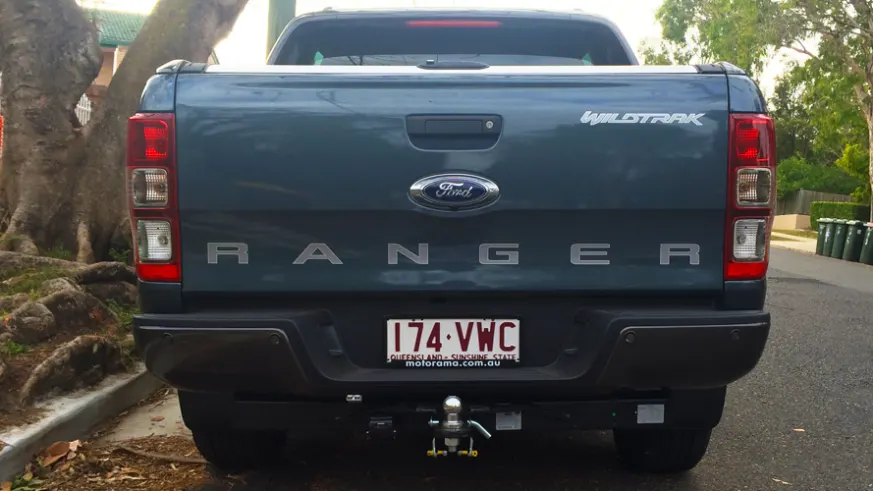
COST
The Ranger lineup starts with 4x2 single cab chassis models up to the 4x4 dual cab pick-ups with Hi-Rider and Super Cab models sitting in-between. There are a whopping 37 configurations of the Ranger, and that’s before you get to putting a custom tray fitment on a cab chassis model.
Badging from entry to top-level is XL, XL Plus, XLS, XLT and Wildtrak – and depending on what you pick, you can choose from a 2.2L or a 3.2L diesel.
The XL 4x2 single cab chassis will set you back $27,390 before on-road costs and tray fitment, rising up through all the variations to the top of the ‘regular’ Ranger range, the XLT 4x4 dual cab pick up at $54,390 before on-road costs.
The Wildtrak models kicks off from $57,890 before on-road costs for a manual Wildtrak without premium paint or option packs. As tested, our Ranger in Metropolitan Grey with 6-speed automatic transmission and Wildtrak Technology Pack will wind up at $63,390 before on-road costs.
Your scheduled services are booked in every 12 months or 15,000kms on the Ranger.

CONCLUSION
The MkII Ranger carries over the character from the last model, while still forging its own image with a tough, new look that’s backed up by a host of new upgrades to the technology.
The Wildtrak especially benefits from the upgrades more than most, as unlike other brands, Ford keeps the option list short at this end of the Ranger lineup, instead including the majority of upgrades as standard equipment.

